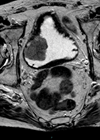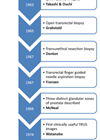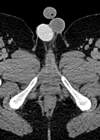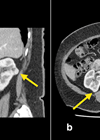Features
Bladder carcinoma MRI
Bladder malignancy is one of the commonest malignancies of the renal tract, accounting for approximately 6% of male malignancy and 2% of female malignancy. The incidence increases with patient age with 70% of patients being over the age of 65...
Biomarkers in prostate cancer detection
Prostate cancer (PCa) is the second most common cancer in men with an estimated prevalence of 1.1 million worldwide in 2012. This heterogeneous disease resulted in approximately 307,000 deaths, making it the fifth leading cause of cancer-related death in men...
Training to be a urologist: how risky is it?
The NHS and urology face challenging times in trying to provide quality patient care efficiently and economically. Urology trainees are experiencing conflicting pressures with a new contract, a challenging on-call system and changing training requirements in an overstretched, centralised service...
Catheters and incontinence after radical prostatectomy: Preparing (but not scaring) men
Every year about 6000 men in the UK undergo radical prostatectomy (RP) for treatment of prostate cancer [1]. Despite surgical advances, RP continues to be associated with significant side-effects including urinary incontinence (UI) [2]. Immediately following removal of the urinary...
History of prostate biopsy – part 1
Part 2 of this topic is available here. Prostate biopsy (PBx) to exclude cancer has been part of clinical practice since the beginning of the 20th Century. PBx techniques have evolved over time to optimally address some of the unique...
Testicular tumour imaging
Testicular tumours are the most common tumour in young males with a peak incidence seen between 25 and 34 years [1]. The overall incidence is slowly increasing, although the exact reasons for this are uncertain, and there is a greater...
Simulation-based training of procedural skills: application and integration of educational theories
Educational theories: how familiar are we with these theories and their application in our training? As a Simulation Fellow I have been involved in teaching specific procedural skills and running full immersion simulation sessions. This experience has exposed me to...
Recent advances in the management of castration resistant prostate cancer
Castrate resistant prostate cancer (CRPC) is defined by disease progression despite androgen-deprivation therapy lowering testosterone to castrate levels. It may present as a rise in serum levels of prostate specific antigen (PSA), progression of pre-existing disease, or the appearance of...
Thermal ablative techniques for small renal masses
The incidence of renal cell carcinoma has increased over the past decade which can be partly attributed to the increased use of imaging modalities [1,2]. Nephron sparing procedures for the management of small renal tumours have gained popularity which include...
Overview of partial nephrectomy techniques: influence of technology
Traditionally, radical nephrectomy was the preferred operation for kidney cancer, while partial nephrectomy was reserved for specific circumstances and essential indications such as a tumour in a solitary kidney, bilateral kidney tumours, or severe chronic kidney disease (CKD). Given the...
The scent of Ethiopia: a personal story part 2
In May/June 2016 we featured a wonderful account of Zeeshan Aslam’s first trip with Urolink to the Hawassa Referral Hospital in Ethiopia (see here). One year on we are delighted that Zeeshan has once again taken the time to provide...
Testing radical prostatectomy in men with prostate cancer and oligometastases to the bone: a randomised controlled feasibility study
Prostate cancer is the commonest cancer and the second most frequent cause of cancer death in Western men [1]. The recent STAMPEDE data suggests a median survival of just 42.1 months in the control arm of metastatic men [2]. Current...













